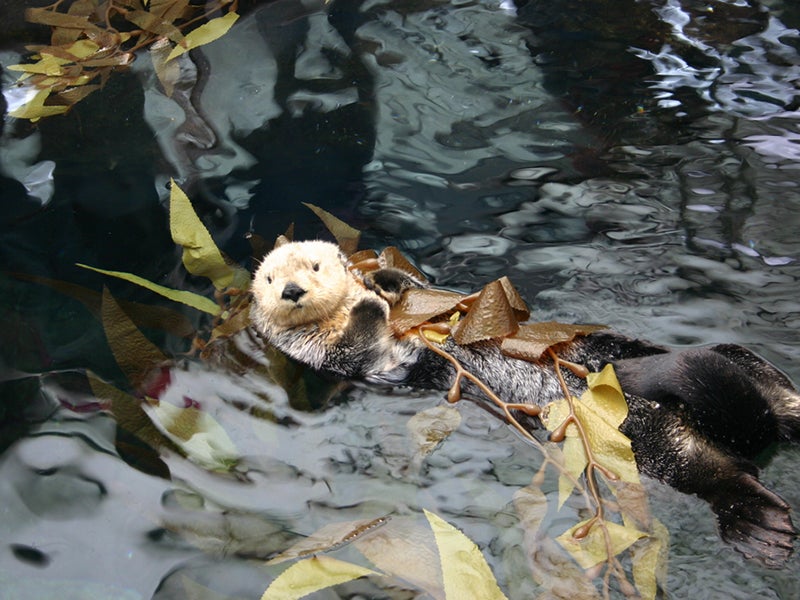Judge Upholds Decision to End “No Otter Zone”
Second ruling to uphold U.S. Fish & Wildlife Service’s decision to end failed program that excluded sea otters from their historic range along the southern California coast
Contact
For the second time in as many years, a federal judge last Friday upheld the U.S. Fish & Wildlife Service’s decision to end the “No Otter Zone”—a failed program that the government determined would harm the sea otter population by excluding the animals from their historic range along the southern California coast.
Several fishing industry groups had challenged the federal decision to end the management program in two separate lawsuits. In Friday’s opinion, Judge Gee ruled against these industry groups by declaring that the law does not require the Service to continue a failed and harmful program.
Earthjustice on behalf of Friends of the Sea Otter, Defenders of Wildlife, The Humane Society of the United States and Center for Biological Diversity intervened to help defend the Service’s decision.
BACKGROUND:
Congress established the “No Otter Zone” (Public Law 99-625) in 1986 as part of a plan by U.S. Fish and Wildlife Service to translocate sea otters to San Nicolas Island to establish a second population. At the time the agency suggested that the translocation program would help southern sea otters, which are protected as a “threatened” species under the Endangered Species Act, to recover should a catastrophic event like an oil spill threaten the otter population along parts of the California coast. The “No Otter Zone” was established by Congress in response to complaints from fishermen that moving otters to a new location could interfere with their fishing activities.
The translocation program ultimately failed in part because the experimental population at San Nicolas Island did not grow at the rate the agency had hoped it would to establish a viable population. Many relocated otters swam back to their waters of origin; others died from being captured or transported. The U.S. Fish and Wildlife Service subsequently determined in 2000 that enforcing the no-otter zone was actually hurting the sea otter’s chances at recovery. In 2003, the agency determined again that eliminating the No Otter Zone and allowing otters to expand to their natural, historical range south of Point Conception was necessary to achieve recovery of the species.
That decision has been challenged by fishing industry groups in two lawsuits, each seeking to force the Service to re-establish the No Otter Zone. In September 2015, U.S. District Court Judge Walter found that forcing the Service to continue the failed No Otter Zone program would be absurd given that the purpose of the program had been to protect otters and it was now known to harm their survival and recovery.
While the California sea otter population has rebounded from historical lows, the species remains threatened by pollution, disease, and competition with fisheries. The population of California sea otters before fur traders arrived is believed to have been between 14,000 and 16,000. In recent years, the population has hovered around 3,000 animals.
QUOTES:
“Ending the No Otter Zone continues to be the right thing to do. The No Otter Zone was part of a plan meant to help the California sea otter recover, but it turned out to do just the opposite,” said Andrea Treece, Earthjustice attorney who argued the case. “Otters are a vital part of our coastal ecosystem—otters need habitat and the kelp forest habitat needs otters. The court’s decision helps the sea otters and coastal habitat by allowing otters to expand their population southward without human interference.”
FSO Board Chair Jennifer Covert said, “the Court’s decision confirms that the U.S. Fish and Wildlife Service made the right decision to let sea otters expand their range naturally, without artificial barriers. If this species is to recover, wider distribution throughout the historic sea otter range is essential.”
“This decision is not just a win for sea otters, but also for endangered species everywhere,” said Anna Frostic, senior attorney for The Humane Society of the United States. “The translocation program was an effort to protect the species with reasonable accommodations to the fishing industry. But the court reinforced that the government has the obligation to amend or terminate a program when it is no longer helping the imperiled species that the government is required to protect.”
“I can picture sea otters floating over the kelp forests and applauding this victory,” said Miyoko Sakashita with the Center for Biological Diversity. “This decision puts California’s sea otters back on the track toward recovery.”
“If we want threatened sea otters to make a comeback in California, we need programs that encourage recovery instead of hindering it,” said Kim Delfino, Director of California Programs for Defenders of Wildlife. “The U.S. Fish and Wildlife Service recognized that the ‘no-otter zone’ would do more harm than good to sea otters by blocking their access to vital habitat. The judge’s decision reaffirms that fact.”

Additional Resources
About Earthjustice
Earthjustice is the premier nonprofit environmental law organization. We wield the power of law and the strength of partnership to protect people's health, to preserve magnificent places and wildlife, to advance clean energy, and to combat climate change. We are here because the earth needs a good lawyer.